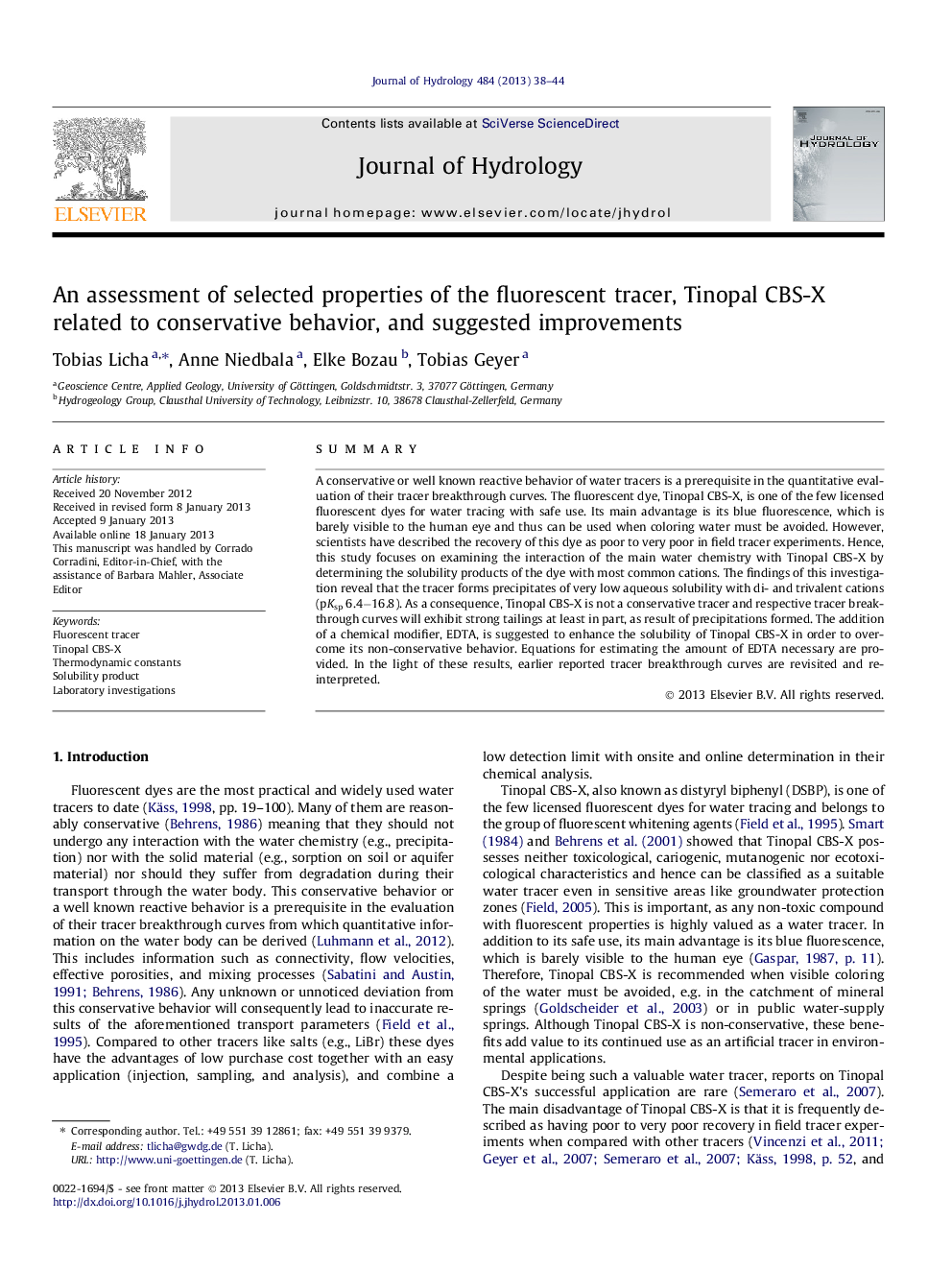| Article ID | Journal | Published Year | Pages | File Type |
|---|---|---|---|---|
| 6413820 | Journal of Hydrology | 2013 | 7 Pages |
SummaryA conservative or well known reactive behavior of water tracers is a prerequisite in the quantitative evaluation of their tracer breakthrough curves. The fluorescent dye, Tinopal CBS-X, is one of the few licensed fluorescent dyes for water tracing with safe use. Its main advantage is its blue fluorescence, which is barely visible to the human eye and thus can be used when coloring water must be avoided. However, scientists have described the recovery of this dye as poor to very poor in field tracer experiments. Hence, this study focuses on examining the interaction of the main water chemistry with Tinopal CBS-X by determining the solubility products of the dye with most common cations. The findings of this investigation reveal that the tracer forms precipitates of very low aqueous solubility with di- and trivalent cations (pKsp 6.4â16.8). As a consequence, Tinopal CBS-X is not a conservative tracer and respective tracer breakthrough curves will exhibit strong tailings at least in part, as result of precipitations formed. The addition of a chemical modifier, EDTA, is suggested to enhance the solubility of Tinopal CBS-X in order to overcome its non-conservative behavior. Equations for estimating the amount of EDTA necessary are provided. In the light of these results, earlier reported tracer breakthrough curves are revisited and re-interpreted.
⺠Thermodynamic constants determined for low soluble tinopalates. ⺠Solubility of Tinopal CBS-X calculated for different water types. ⺠Solubility is controlled by calcium and magnesium. ⺠Without chemical modifier (EDTA) Tinopal CBS-X easily precipitates. ⺠Equation provided to estimate EDTA amounts for preventing precipitation.
